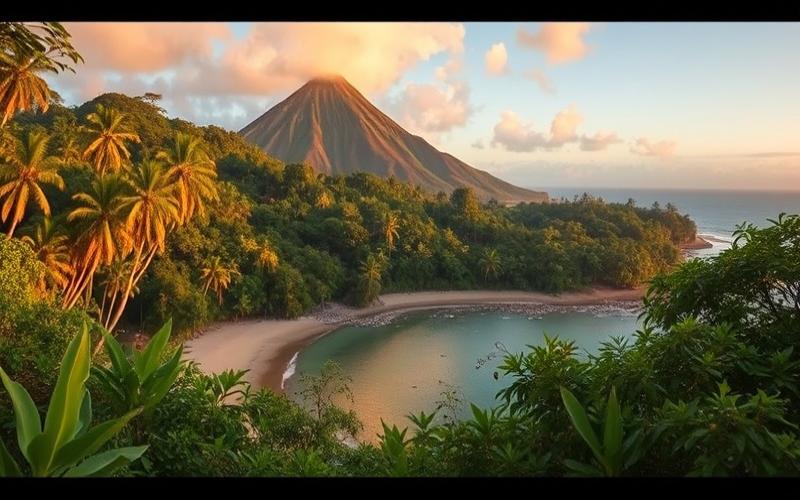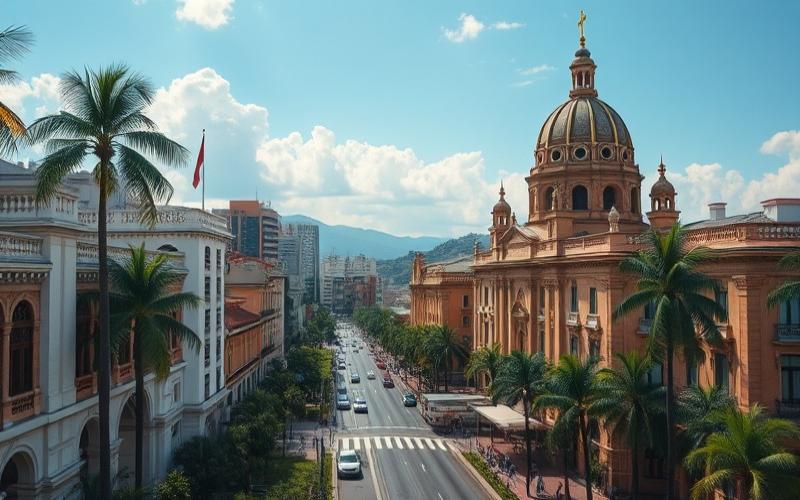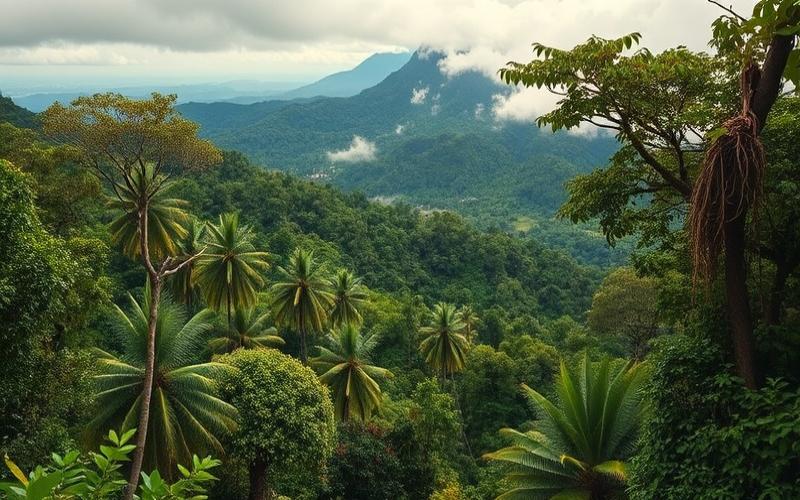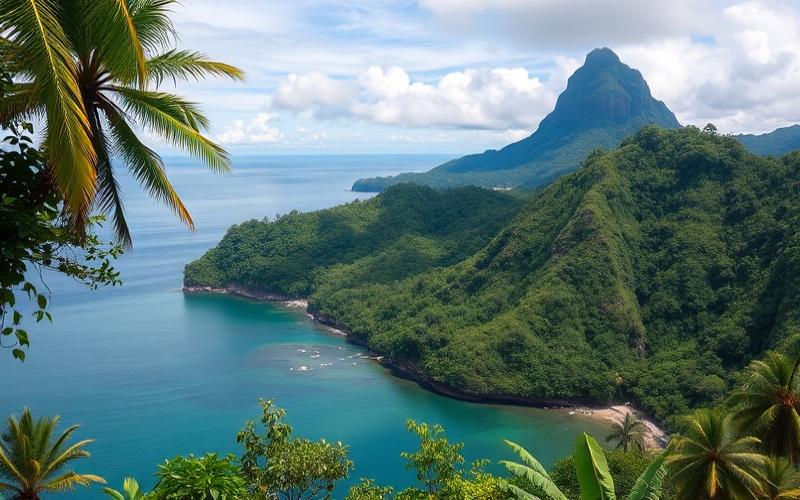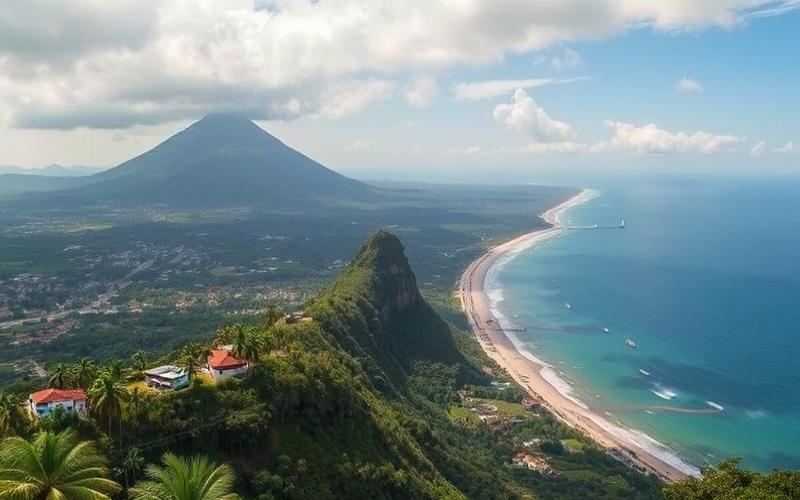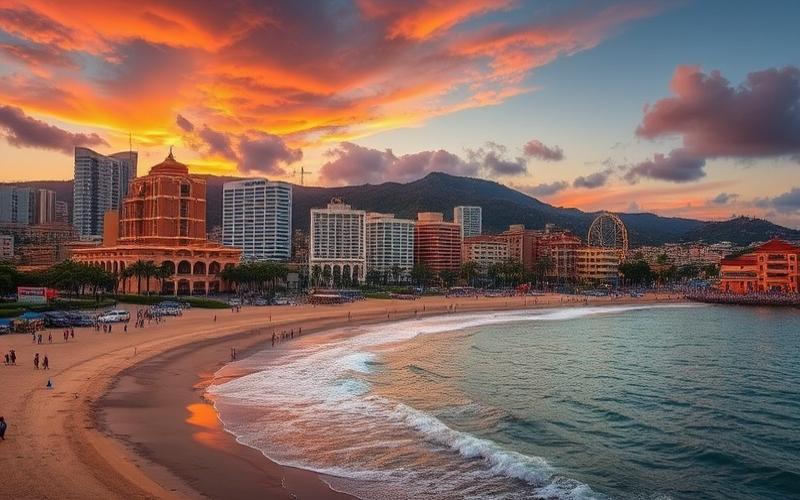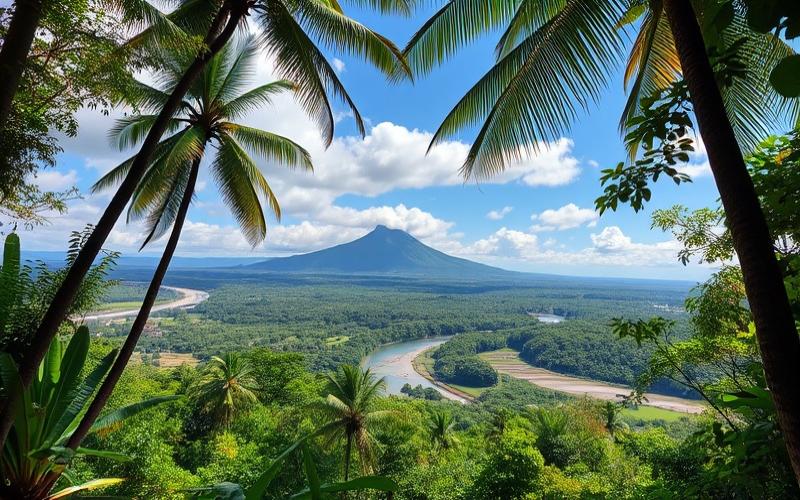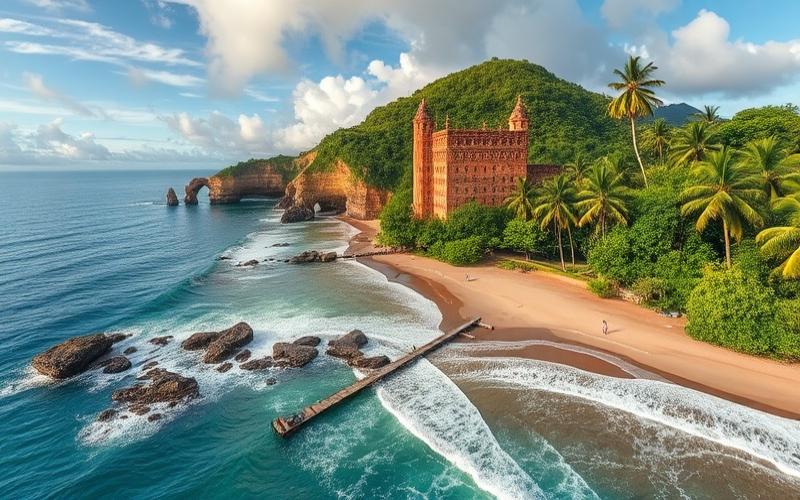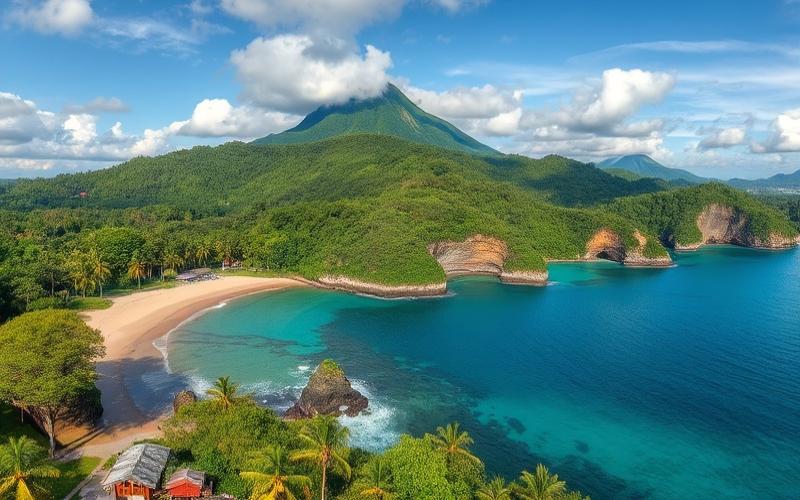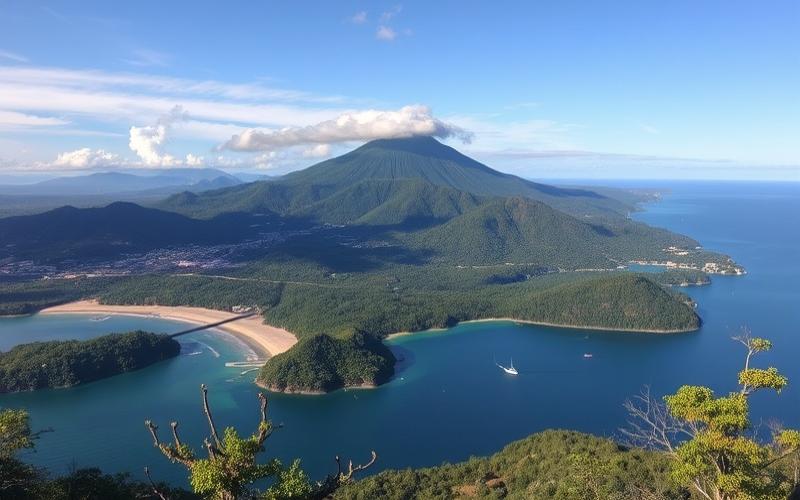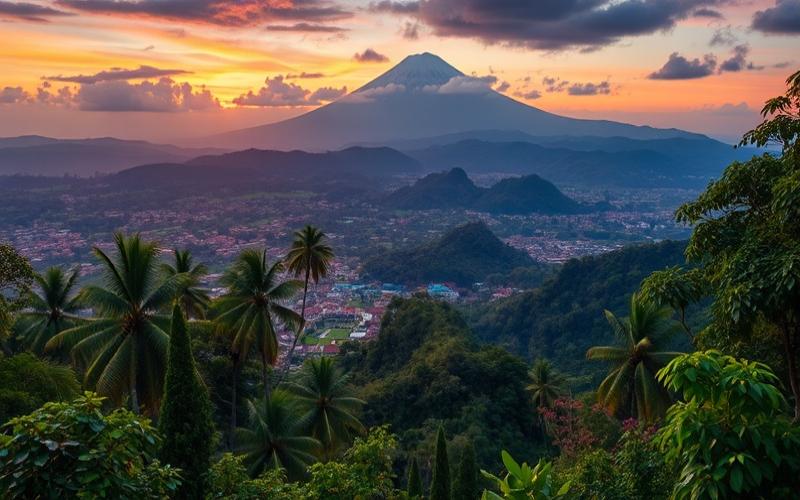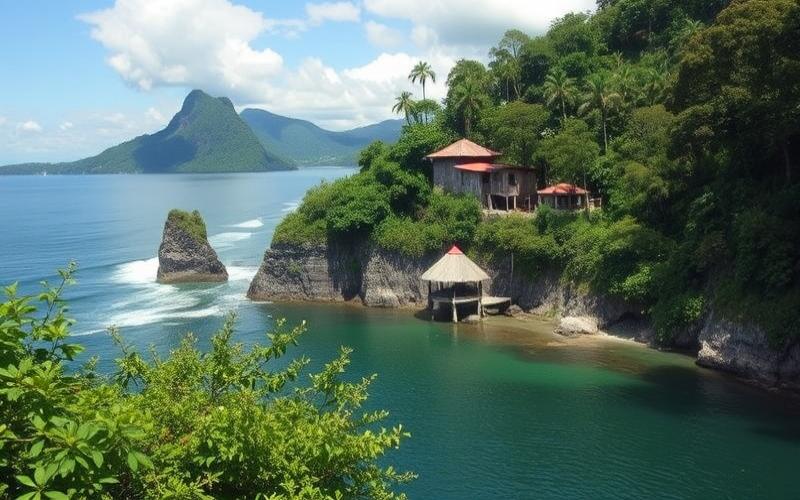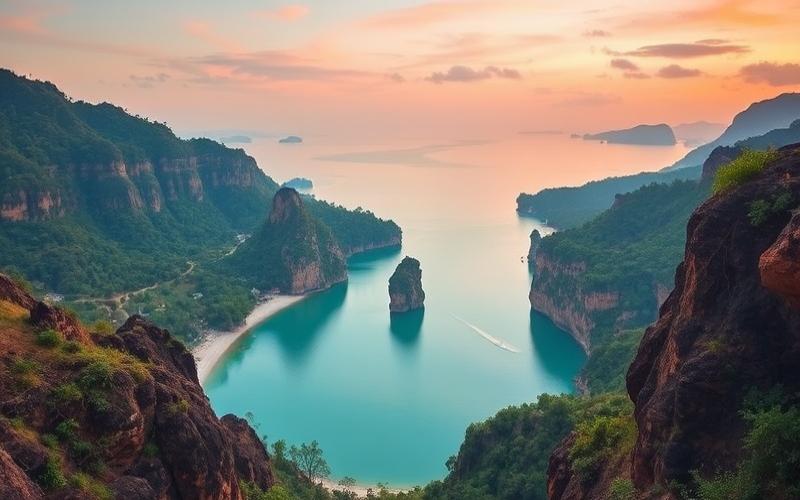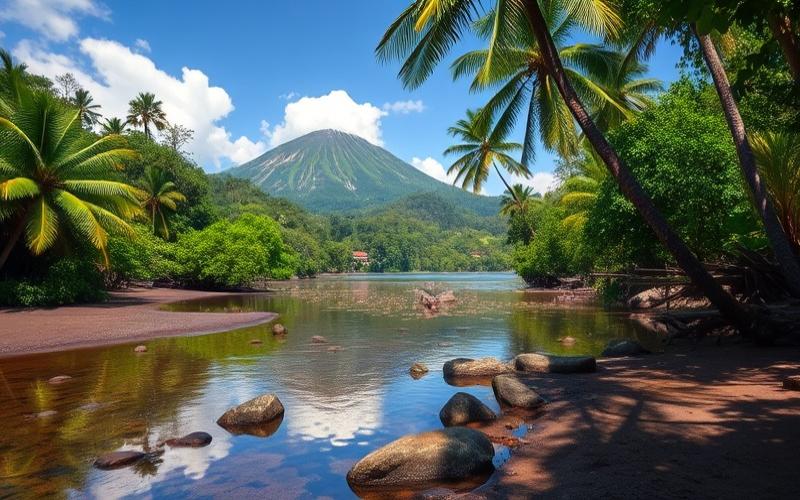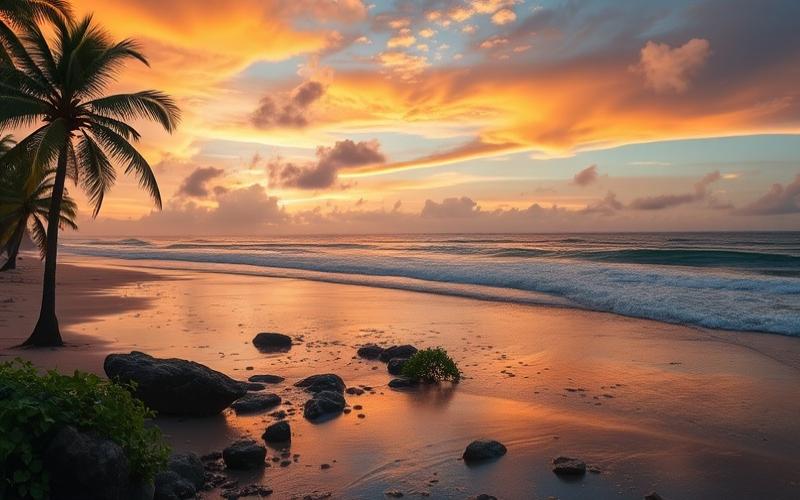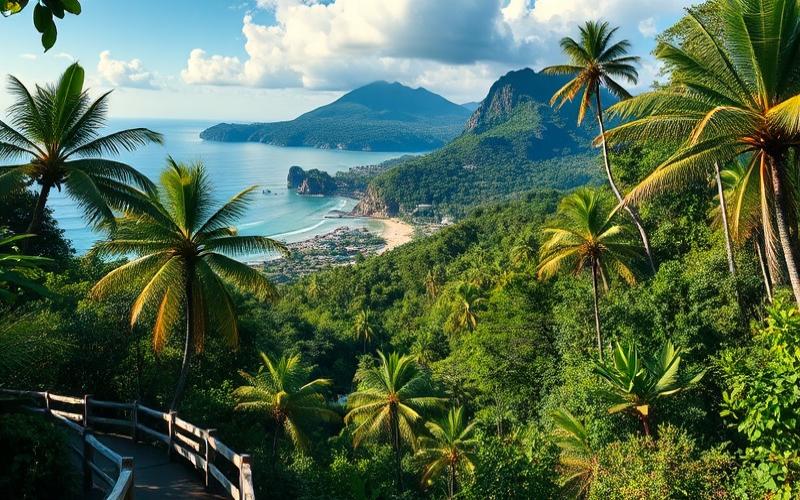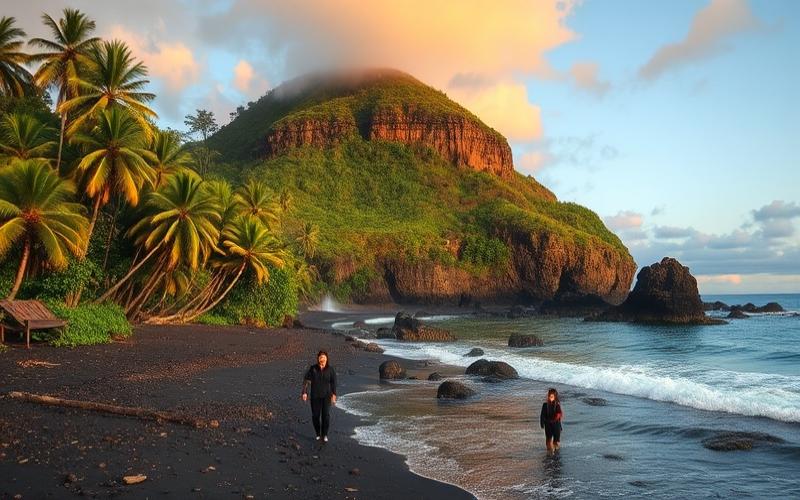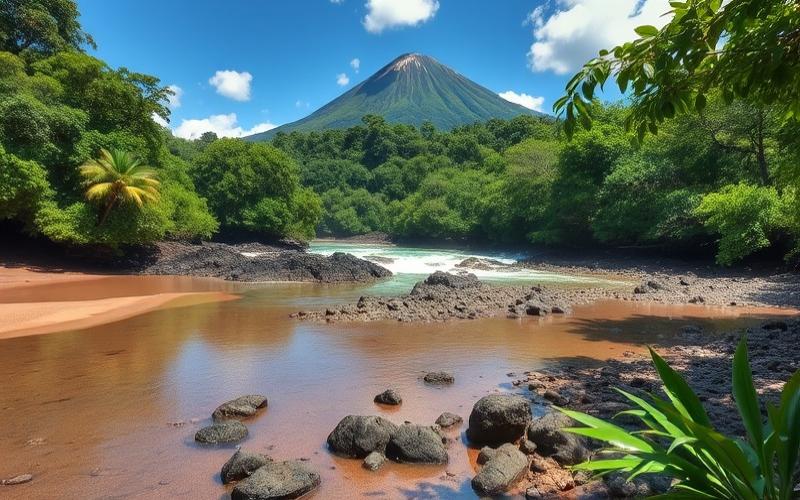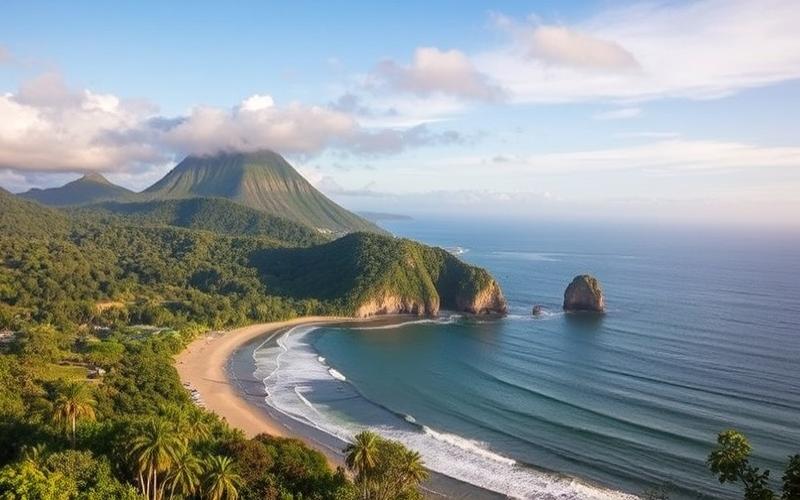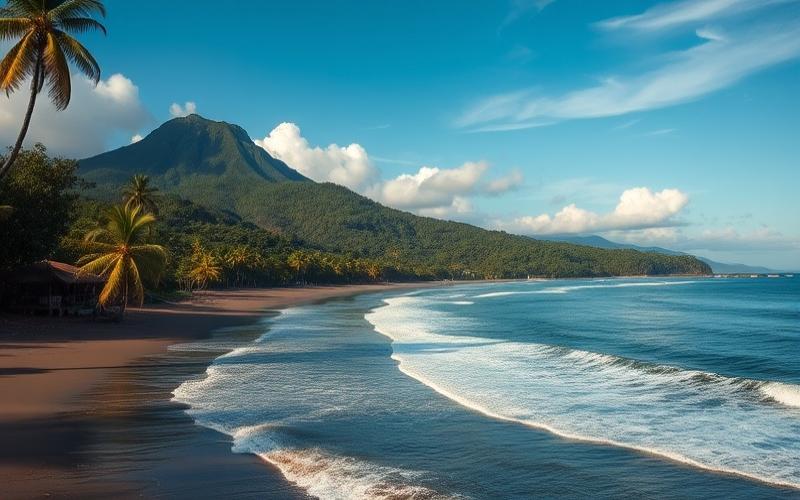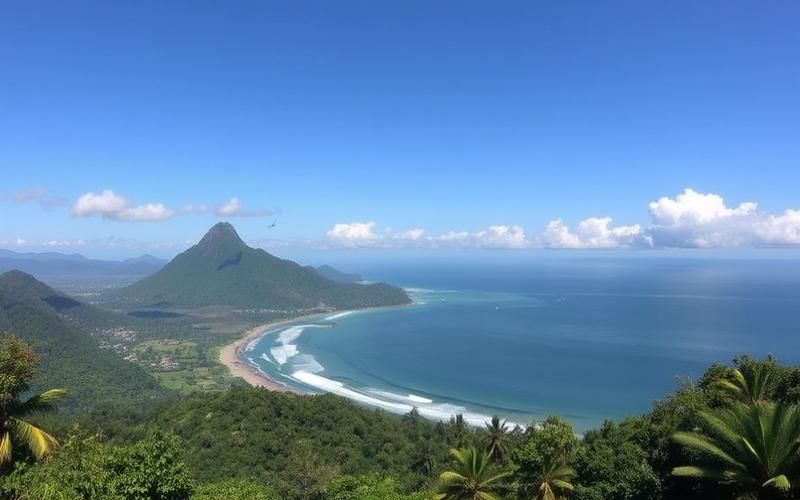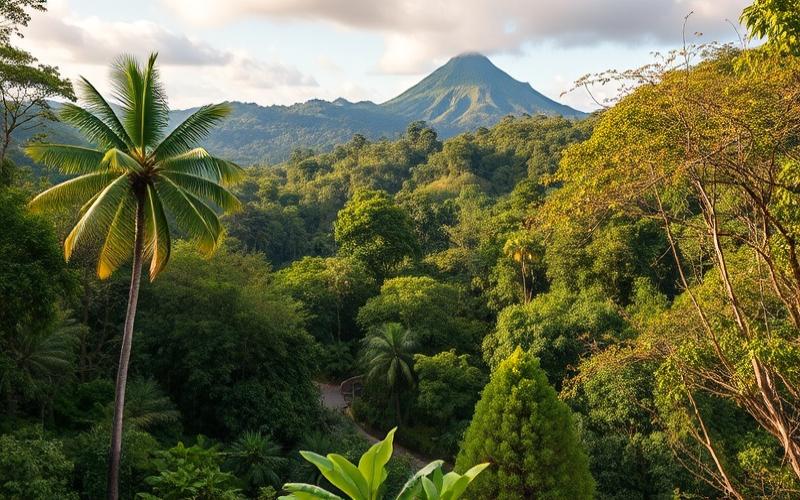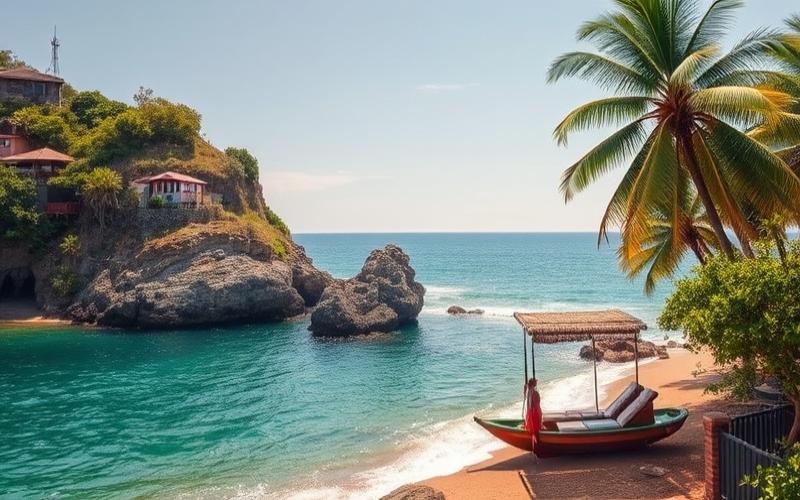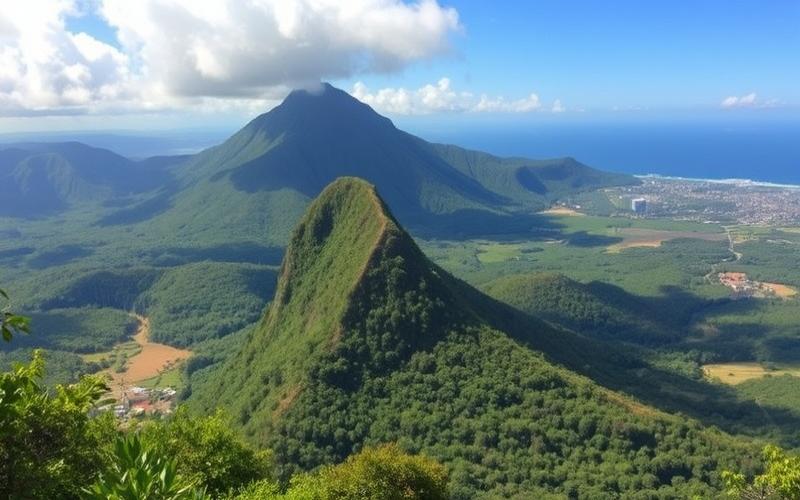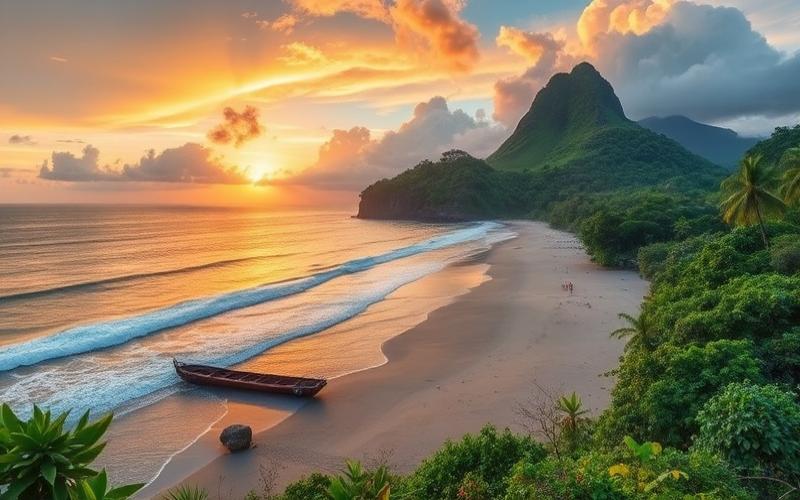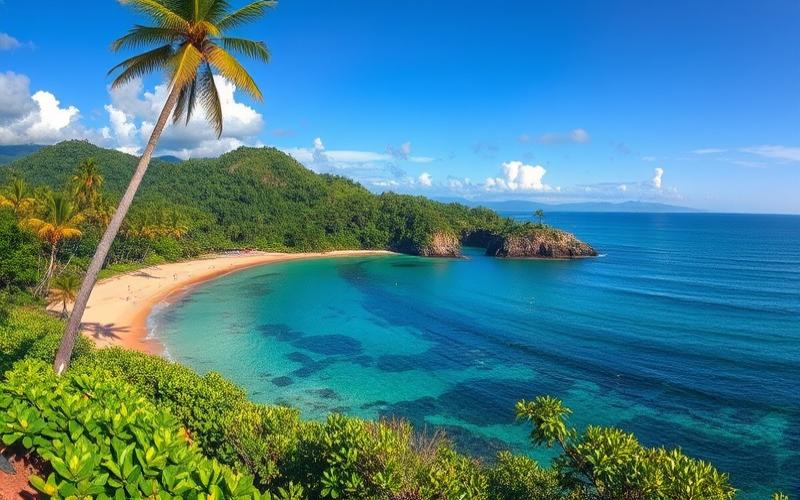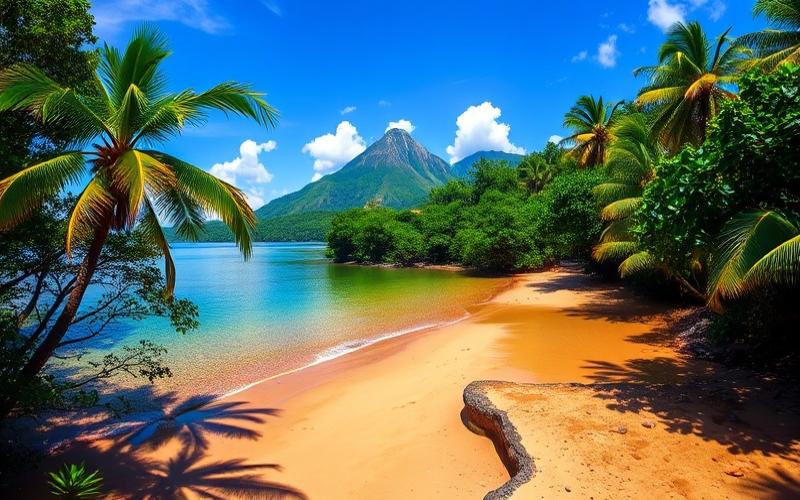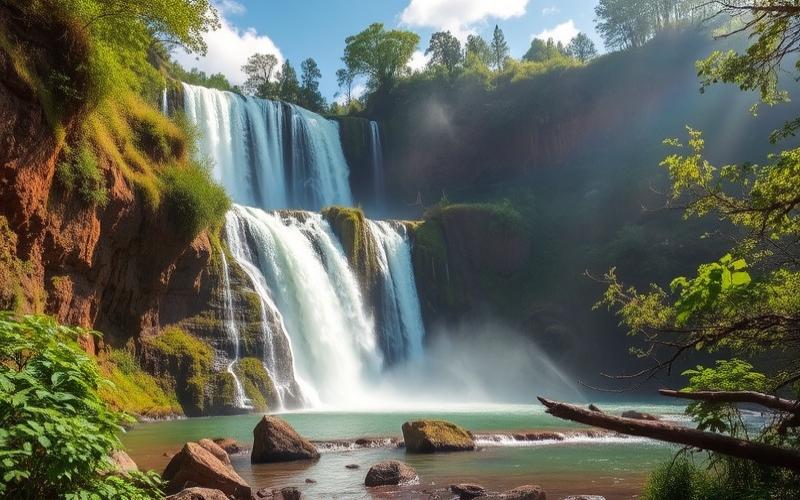
 Published on and written by Cyril Jarnias
Published on and written by Cyril Jarnias
Diving Into the Property Renovation Process in Costa Rica
Renovating a property in Costa Rica is an exciting adventure that blends tropical challenges with unique opportunities. Imagine transforming a run-down space into a customized tropical paradise, while riding the waves of this vibrant country’s cultural and architectural diversity.
However, succeeding in this endeavor requires some knowledge of complex legal aspects, specific climate requirements, and innovative sustainable solutions.
Guide to Turning Your Dream Into Reality
In this article, we’ll guide you through the essential steps to:
- Minimize potential pitfalls
- Maximize benefits
- Create a project as enjoyable as a sunset on Tamarindo Beach
Good to Know:
Costa Rica has specific construction and renovation regulations that are essential to understand before embarking on a real estate project.
Increasing Your Property Value in Costa Rica Through Renovation
Specific Tips to Maximize Property Value in Costa Rica:
- Kitchen and Bathroom Modernization:
- Choose contemporary and functional designs.
- Install energy-efficient appliances.
- Prefer open layouts that enhance natural light.
- Use moisture-resistant materials like granite, quartz, or stainless steel.
- Energy Efficiency Improvements:
- Add solar panels, solar water heaters, or LED lighting systems.
- Enhance thermal insulation (double-pane windows, ventilated roofs).
- Install rainwater harvesting systems.
- Creating Usable Outdoor Spaces:
- Build or renovate covered terraces, patios, or pergolas to enjoy the tropical climate year-round.
- Design a tropical garden with low-maintenance local plants resistant to humidity.
- Include a pool if budget allows—highly sought after by tourists and residents.
Materials Suitable for Tropical Climate:
| Type | Recommended Material | Resistance |
|---|---|---|
| Floor/Wall Coverings | Ceramic tile/stoneware | Very good against moisture |
| Exterior Joinery | Aluminum/treated wood/UPVC | Excellent durability |
| Roofing | Galvanized sheet metal/concrete tiles | Rain-resistant |
| Kitchen/Bathroom | Quartz/stainless steel/granite | Antimicrobial/moisture-resistant |
Impact on Tourist & Residential Appeal:
Renovated properties attract more tourists seeking modern comfort in a natural setting.
Adding private outdoor spaces (terraces with views/gardens/pools) significantly increases seasonal occupancy rates and average nightly prices.
For expatriate or affluent local residents, energy efficiency and low maintenance become decisive factors in their property choices.
Good to Know:
Well-targeted renovations—interior modernization, energy optimization, and outdoor enhancement—often lead to a direct increase in potential rental income and substantial added value upon resale (sometimes +20% to +30% depending on the type/scope of work done).
Current Costa Rican Real Estate Market Trends Influencing These Choices:
- High rental demand in tourist beach areas due to a growing international clientele seeking modern, fully-equipped villas
- Increasing emphasis on eco-friendly/sustainable criteria among both buyers and renters
- Growing preference for “hybrid spaces” that allow for year-round remote work or outdoor leisure
Potential Return on Investment:
Strategic renovations in Costa Rica typically offer high ROI thanks to:
- The continuous rise in the local market (+10% annually in some tourist regions)
- Optimized rental profitability compared to non-modernized properties
It’s advisable to schedule work during the dry season to avoid delays/additional costs due to weather.
Summary List of Priorities:
- Modernize kitchens/bathrooms with anti-moisture materials
- Create/enhance terraces & tropical gardens
- Invest in energy-efficient solutions suited to the local climate
These strategies position your property among those that stand out sustainably in the Costa Rican market.
Good to Know:
To maximize your property value in Costa Rica, focus on modernizing the kitchen and bathroom, as these spaces are crucial for potential buyers. Investing in energy efficiency improvements, such as installing double-pane windows and solar panels, can also boost your home’s appeal. Additionally, creating functional outdoor spaces like terraces or gardens is particularly attractive in Costa Rica’s tropical climate. Prioritize moisture-resistant materials like local hardwood or waterproof concrete to ensure the durability of your renovations. In the current real estate market, these enhancements can not only increase your property’s appeal to tourists seeking vacation rentals but also ensure a positive return on investment. Recent trends show growing interest in eco-friendly homes, which may influence your renovation choices toward sustainable and efficient options.
Key Steps for a Successful Renovation
The importance of initial planning is crucial for a successful renovation in Costa Rica. You must consider local climate specifics, such as high humidity, rainy season, and strong sun exposure. These factors influence material choices, construction techniques, and work schedules.
Key Steps for a Successful Renovation in Costa Rica:
- Planning Adapted to Tropical Climate:
- Analyze humidity and corrosion risks.
- Account for rainy periods when scheduling work.
- Select architectural solutions that promote natural ventilation and sun protection.
- Selecting Local Professionals:
- Prefer architects and contractors certified by the Federated College of Engineers and Architects of Costa Rica (CFIA).
- Request multiple quotes and compare offers.
- Check references, project history, and absence of past disputes.
- Consult reputable companies by region (e.g., Constructora Guzmán in San José, Pacific Home Renovations on the Pacific Coast).
- Administrative Procedures and Permits:
- Obtain a “Uso de Suelo” certificate from the municipality.
- Get plans approved by the Building Permits Commission (INVU).
- Submit documents to the municipality for final validation.
- Ensure compliance with water and electricity connection requirements and obtain permits for wastewater disposal.
| Procedure | Concerned Authority | Documents to Provide | Estimated Time |
|---|---|---|---|
| Uso de Suelo Certificate | Local Municipality | Form, ID, property deed | 2 to 4 weeks |
| Plan Approval | Comisión Revisora de Permisos de Construcción (INVU) | Architectural plans, technical file | 4 to 8 weeks |
| Final Building Permit | Municipality | Approved plans, complete file | 2 to 6 weeks |
- Budget Management and Contingencies:
- Establish a detailed budget item by item.
- Allow for a 15% to 20% margin to handle unforeseen issues related to material imports, price variations, or weather delays.
- Regularly track expenses and adjust the plan based on project progress.
- Choosing Durable Materials Suitable for Tropical Climate:
- Prefer treated wood, waterproof concrete, aluminum, or stainless steel.
- Select paints and coatings resistant to humidity and UV rays.
- Prioritize local materials to reduce import costs and ecological footprint.
- Regular Site Monitoring:
- Conduct frequent visits to check work progress.
- Verify compliance with plans, deadlines, and budget.
- Document each stage with photos and progress reports.
Tips for Personalizing Your Property While Respecting Local Style:
- Draw inspiration from traditional Costa Rican architecture (tile roofs, shaded terraces, use of local wood).
- Incorporate natural elements (stone, bamboo, native vegetation).
- Respect typical regional colors and materials for harmonious integration into the landscape.
Key Takeaway:
The success of a renovation in Costa Rica depends on rigorous planning, choosing qualified professionals, adhering to administrative procedures, prudent budget management, and using materials suited to the tropical climate.
Good to Know:
A successful renovation in Costa Rica starts with careful planning that accounts for the country’s tropical climate conditions. Selecting qualified local professionals, such as architects and contractors, is crucial; check their backgrounds and qualifications to avoid surprises. Administrative procedures for obtaining building permits are essential; contact local authorities to understand current regulations. Manage your budget cautiously, allowing for contingencies, as material imports and weather conditions can cause delays. Prioritize durable materials, like moisture-resistant treated wood, to ensure renovation longevity. Regular site monitoring is essential to ensure the project stays on schedule and within budget. Finally, personalize your property by incorporating elements of local architectural style, such as tile roofs or open patios, for complete harmony with the surrounding environment.
Budget and Financing: Strategies for Your Project
Funding sources for a renovation project in Costa Rica are varied and must be carefully analyzed before work begins. Here are the main options to consider:
| Funding Source | Description | Specifics for Costa Rica |
|---|---|---|
| Local Bank Loans | Offered by Costa Rican banks, with interest rates varying by profile and guarantees | Sometimes difficult for foreigners to access; lengthy process |
| International Loans | Possible through foreign institutions or international banks | Often require local collateral |
| Private Loans (Hard Money) | Quick financing based on property value rather than credit score | Fast access to funds, rates between 12% and 18%, LTV up to 50% |
| Grants | Occasional government or NGO programs | Rare but possible depending on public policy |
| Crowdfunding | Online platforms allowing individuals to invest in your project | Less common, requires good communication |
Budget Planning
Budget planning is crucial before any launch. It allows you to:
- Anticipate all costs (materials, labor, contingencies)
- Avoid exceeding the initial budget
- Secure necessary funding
Available tools and services:
- Customized spreadsheets (Excel/Google Sheets) adapted for construction
- Specialized software like Buildertrend or CoConstruct to track expenses in real time
- Local accounting services familiar with real estate projects
Tips for Saving on Materials and Labor in the Costa Rican Context
- Systematically compare multiple local suppliers: prices can vary significantly.
- Prefer locally produced materials to limit import costs.
- Look for surplus or clearance items from national distributors.
- Hire locally recommended artisans rather than going through international agencies.
- Negotiate every quote: negotiation is an integral part of the Costa Rican market.
Practical list:
- Regularly check the colón’s exchange rate against the dollar if your purchases are in foreign currency.
- Schedule some work during the off-tourist season to benefit from more attractive labor rates.
Tax Benefits & Government Incentives
- Some green projects benefit from partial exemptions (reduced VAT on solar panels, eco-insulation…)
- Temporary urban renovation incentive programs sometimes exist in certain municipalities
- Partial deduction of certain expenses may apply to rental property income under strict conditions
It’s advisable to consult a local tax specialist to legally optimize your financial setup.
Good to Know:
To maximize your chances: diversify your funding sources according to your profile, meticulously plan each expense through rigorous tracking—then smartly take advantage of local tax specifics when possible!
Selecting the Best Materials for Your Renovation
Costa Rica features a tropical climate characterized by high humidity, relatively stable temperatures year-round, and two main seasons: the dry season (December to April) and the rainy season (May to November). This context creates several challenges for construction material choices: high humidity, attacks from wood-eating insects like termites, regional temperature variations due to altitude, and notable seismic activity.
Essential Characteristics for Materials in Costa Rica:
- Enhanced resistance to humidity to prevent mold and degradation.
- Protection against insects, particularly termites and ants.
- Adaptability to temperature variations depending on geographic zone.
- Good performance during seismic activity, especially in mountainous regions.
| Building Part | Recommended Materials | Main Advantages |
| Roofing | Terracotta tiles or painted metal; eco-friendly composite shingles | Resistance to heavy rains; long lifespan; low maintenance |
| Walls | Reinforced concrete blocks; certified local tropical woods (teak, melina); stabilized adobe | Excellent resistance to humidity and insects for concrete; natural warmth of local wood if properly treated |
| Floors | Ceramic tile or local stone (slate, granite); treated bamboo or certified local hardwood (FSC) | Easy maintenance; mechanical resistance; coolness in hot climate |
Common Eco-Friendly or Local Materials:
- Bamboo: rapid growth, renewable, good structural resistance after treatment against humidity and insects
- Certified Sustainable Tropical Woods (FSC): teak, melina—naturally resistant to pests if well-dried
- Adobe improved with natural stabilizers
- Local stone, limiting transport
- Locally manufactured cement blocks
Economic & Sustainable Benefits of Local/Eco-Friendly Materials:
- Reduced logistics costs due to resource proximity.
- Direct support for local artisans.
- Reduced carbon footprint compared to mass imports.
Tips for Sourcing Locally:
- Prefer suppliers with recognized eco-certification (FSC for wood).
- Connect with local artisan cooperatives that value regional raw materials.
- Always verify that any natural material is properly dried/treated against fungi & insects before installation.
Concrete Examples by Usage Type:
- For exposed frames or exterior cladding: certified local teak—naturally termite/humidity resistant
- For outdoor terraces: treated densified bamboo
- For cool and robust interior walls: cement blocks produced in the region
- For wet interior floor coverings (kitchen/bathroom): regional ceramic tile
Choosing materials wisely according to these criteria not only sustainably increases the property’s asset value but also significantly improves daily thermal/acoustic comfort, while fully respecting Costa Rica’s exceptional environment. This also promotes better landscape integration and minimal ecological impact.
Good to Know:
For renovating a property in Costa Rica, it’s crucial to select materials that adapt to its tropical climate, characterized by high humidity and great biodiversity. Opt for durable materials naturally resistant to insects, such as teak or cedar wood, which offer good protection against termites and other pests. Homes must also withstand temperature variations, so prioritize effective insulation and breathable materials like laminated bamboo in roofs and walls. Choose floor coverings made from local stone or polished concrete, as they remain cool and durable against humidity. For eco-friendly and economical solutions, visit local markets offering bamboo or recycled wood, while supporting the local economy. These wise material choices not only increase your property’s value but also respect the natural environment, contributing to better quality of life in harmony with Costa Rica’s ecosystem.
Disclaimer: The information provided on this website is for informational purposes only and does not constitute financial, legal, or professional advice. We encourage you to consult qualified experts before making any investment, real estate, or expatriation decisions. Although we strive to maintain up-to-date and accurate information, we do not guarantee the completeness, accuracy, or timeliness of the proposed content. As investment and expatriation involve risks, we disclaim any liability for potential losses or damages arising from the use of this site. Your use of this site confirms your acceptance of these terms and your understanding of the associated risks.


